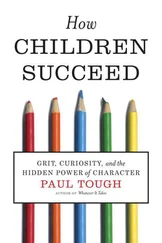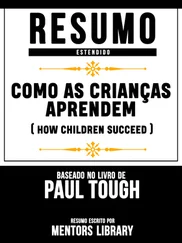11.1 Sources for printed dictionaries
For several decades, InTrans books was the source for all books translation-related. InTrans went out of business in 2014 when the owner retired, so Schoenhof’s schoenhofs.com in Cambridge, MA is now the main source in the US for printed foreign-language dictionaries.
11.2 Web-based research tools
Web-based terminology resources are an increasingly important part of a translator’s arsenal of research tools. Web-based dictionaries and glossaries have the advantage of being easily updatable and easily searchable, but it is important to cast a critical eye on a web-based resource’s reliability. There are a lot of unreliable web-based resources, but some web-based resources have become the standard resources to consult because they are maintained by very reliable sources such as a government language office. One example of this type of website is the French <> English Grand Dictionnaire Terminologique granddictionnaire.com, maintained by the Quebec government office responsible for matters related to the French language.
Online terminology resources that include user-generated content, such as the terminology sections of popular translation web portals, require you to use your judgment when looking at the terminology suggestions. Some entries may be excellent because they are contributed by experienced translators, while others may be contributed by people with limited knowledge of what they’re writing about. Whenever possible, try to verify these types of terms by finding another resource that agrees or disagrees with what you’ve already found.
11.3 Installed electronic dictionaries
Every translator should have at least one of these: if you’re working without Internet access, or if you just want a reliable resource at your fingertips, purchase the downloadable electronic version of a good general-purpose dictionary for your language pairs.
11.4 What to research
One of the hardest things about working as a translator is knowing what you don’t know; part of this is knowing when to research a term or concept. Following are some items that require research, and some suggestions on how to go about this.
• Any word that you don’t recognize. This is an obvious one; when you come upon a word you don’t know, don’t guess at it. Many terms may appear in your basic dictionary and you’ll be done with your research very quickly.
• Acronyms and abbreviations. Some acronyms and abbreviations are obvious in certain contexts, such as “NASA” in an aeronautics industry contract or “UN” in a diplomatic document. Others will be less obvious, and can be complicated by the fact that some international organizations use one name in all languages and some use a translated version of their names. Company-specific acronyms and abbreviations are another challenge, and will often require contacting the translation’s end client for expansions of these terms.
• Titles. Many official titles can be translated more than one way, such as the terms “President,” “Chairman” and “Chief Executive Officer” for the head of a company. It is important to find out if the company has used standard titles for its employees in the past, and if so what they are. Some companies have bilingual websites that are very helpful in this regard, and sometimes you will have to create your terms from scratch.
• Names of organizations. As mentioned above, some international organizations go by one name in every language, while others have a standard translation of their name that is used in other languages. It is important to find out if the organization’s name is normally translated or not, and if so, what the standard translation is.
12 Taxes, insurance and retirement plans
When you’re putting together your first translation resume and wondering who your first clients will be, it’s hard to imagine the day when you’ll be turning down work, or kept consistently busy by a slate of regular clients. In today’s translation climate many translators have never been busier, so it’s important to look a year or two down the road and see where you’d like to be and how to set your business up to get there.
One of the most important steps you can take at the start of your business is to log all of the business contacts you make in an organized format. Over the course of your first year in business, if you market yourself aggressively, you will probably have contact with 300 or more potential clients. Rather than counting on your memory to remind you who these people are, or deleting their “thanks, but no thanks” e-mails, you can save and organize their contact information in order to make use of it later. There are various ways to do this; on paper, using an index card file; or electronically, using a spreadsheet or more sophisticated contact management software. The key element is to keep track of the name of the person you e-mailed or spoke with, all of his or her contact details, and a reminder about what you communicated about. This way, if a potential client tells you, “We only work with translators who have more than three years’ experience,” you can contact them again when you meet their requirement. If a potential client tells you that they’re not taking applications in your language pair right now, contact them again in six months to a year to let them know you’re still interested. You can also use this list of contacts to build a mailing list for your own enewsletter or other promotional tools.
Setting up a semi-automated invoicing system is another way to prepare your business for growth. Once you’re working steadily, billing takes a great deal of time if you do it manually, since a busy translator could generate 100 or more individual invoices during a year. Here you have several options, such as using accounting software that includes an invoicing tool or setting up an invoicing system using a spreadsheet program such as Excel. Whatever option you choose will take some time to set up initially, but will save time when you don’t need to enter a client’s contact and billing information manually on every invoice.
If you’re looking for even more office automation, you can use a company such as MyBizOffice mybizoffice.com or others that will bill your clients for you, deduct taxes from what you make, and funnel money into a 401K plan. Most of these services, also called umbrella companies or employers of record , charge about 5% of your gross income. If you are incorporated, you can also hire an accountant to process your payroll for you and calculate the amount you owe in taxes.
Even if you’re not interested in running a translation agency, another step toward scaling up is to find other translators in your language combinations and specializations with whom you can share work. Especially if you would like to work for direct clients, it can be a big asset to offer a team of two or three translators if the client needs fast turnaround on a large project. Your local ATA chapter and the annual ATA conference are an excellent resource for meeting people like this.
12.1 Incorporating and planning for taxes
Some translators operate their businesses as sole proprietors for many years, while others incorporate immediately. It’s a good idea to talk to an accountant about whether incorporating would be a good idea for you. While the best option here is to contact a qualified accountant or small business consultant, following is an overview of some of the advantages and disadvantages of incorporating:
Separation of finances.Incorporating forces you to keep your business and personal finances separate, since your clients pay the corporation and then the corporation pays you wages, even if you’re the only employee. In this way you are always sure how much the business is earning and how much you’re spending on the business. However, as a sole proprietor you can achieve the same effect by having a business bank account and a personal one and carefully tracking how money flows between the two.
Читать дальше
![Коринн МакКей How to Succeed as a Freelance Translator [calibre 3.46.0] обложка книги](/books/402693/korinn-makkej-how-to-succeed-as-a-freelance-transl-cover.webp)


![Джон Ирвинг - Našlė vieneriems metams [calibre]](/books/384320/dzhon-irving-naŠle-vieneriems-metams-calibre-thumb.webp)
![Джонатан Димблби - Barbarossa - How Hitler Lost the War [calibre]](/books/385421/dzhonatan-dimblbi-barbarossa-how-hitler-lost-the-w-thumb.webp)







